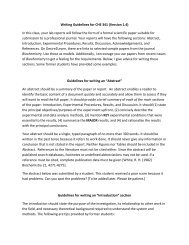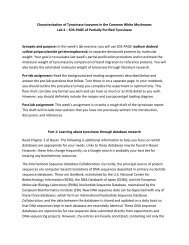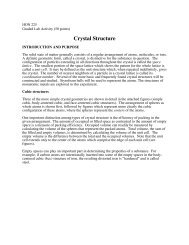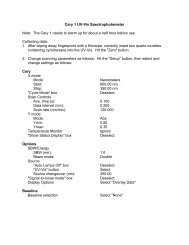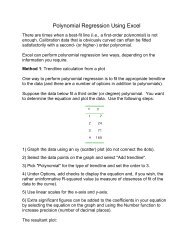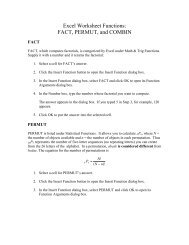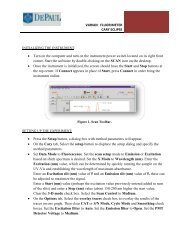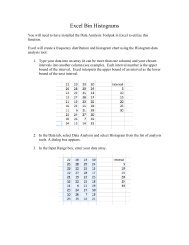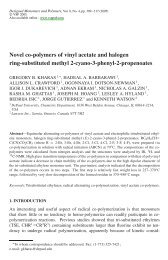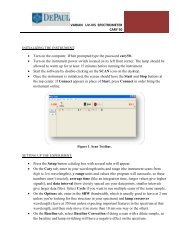Bomem-GRAMS User's Guide
Bomem-GRAMS User's Guide
Bomem-GRAMS User's Guide
Create successful ePaper yourself
Turn your PDF publications into a flip-book with our unique Google optimized e-Paper software.
Appendix D<br />
Glossary<br />
blank sample<br />
A sample that does not absorb infrared radiation within the spectral range<br />
where the measurement is performed.<br />
calibration<br />
The process of aligning analyzer measurements to agree with reference<br />
measurements obtained using a primary method.<br />
calibration (or model or calibration model)<br />
The set of equations that represents the relationship between the absorbance<br />
spectra of a set of samples and the properties of the samples.<br />
Some common types of models are peak height, peak ratio, PLS and<br />
autosubtract models.<br />
calibration set (or training set)<br />
In spectrometer calibration, a set of standard samples used in calibration<br />
model development. The calibration set covers the expected ranges of<br />
property values, as well as any other variations that may affect the spectra,<br />
such as temperature. When there is more than one property, the calibration<br />
set must include independent variations of each property.<br />
channel<br />
An optical channel on the spectrometer. Each channel is associated with one<br />
sample accessory and one detector. Some spectrometers have only one<br />
channel. This is typical of laboratory instruments.<br />
Some spectrometers have multiple channels. This allows one instrument to<br />
analyze several streams simultaneously.<br />
If the sampling system is set up for stream switching, one channel can be<br />
used to analyze two or more streams. In most cases, however, there is only<br />
one stream (i.e. one sampling point) per channel.<br />
channel spectrum<br />
A spectral artifact caused by reflections in the gap between two optical<br />
surfaces, for example, between parallel window surfaces or at the coupling<br />
point between optical fiber ends. Also called Fabry-Perot interference.<br />
<strong>Bomem</strong>-<strong>GRAMS</strong> <strong>User's</strong> <strong>Guide</strong> 49



